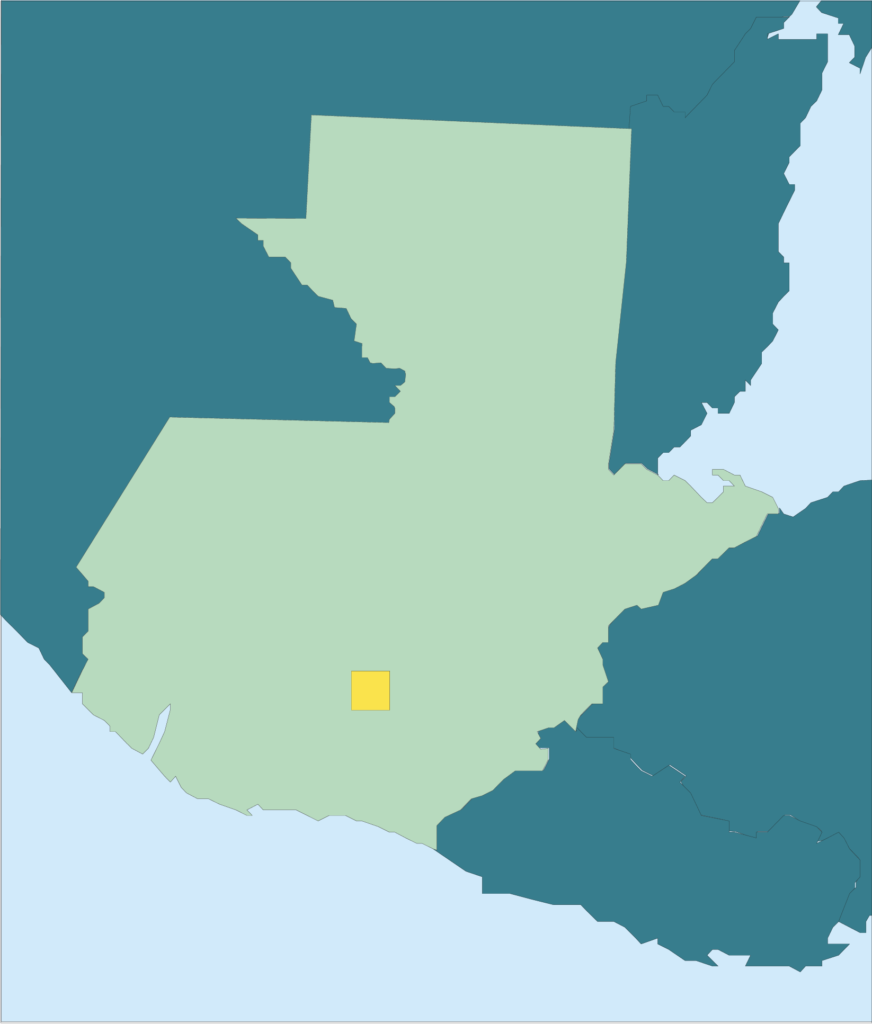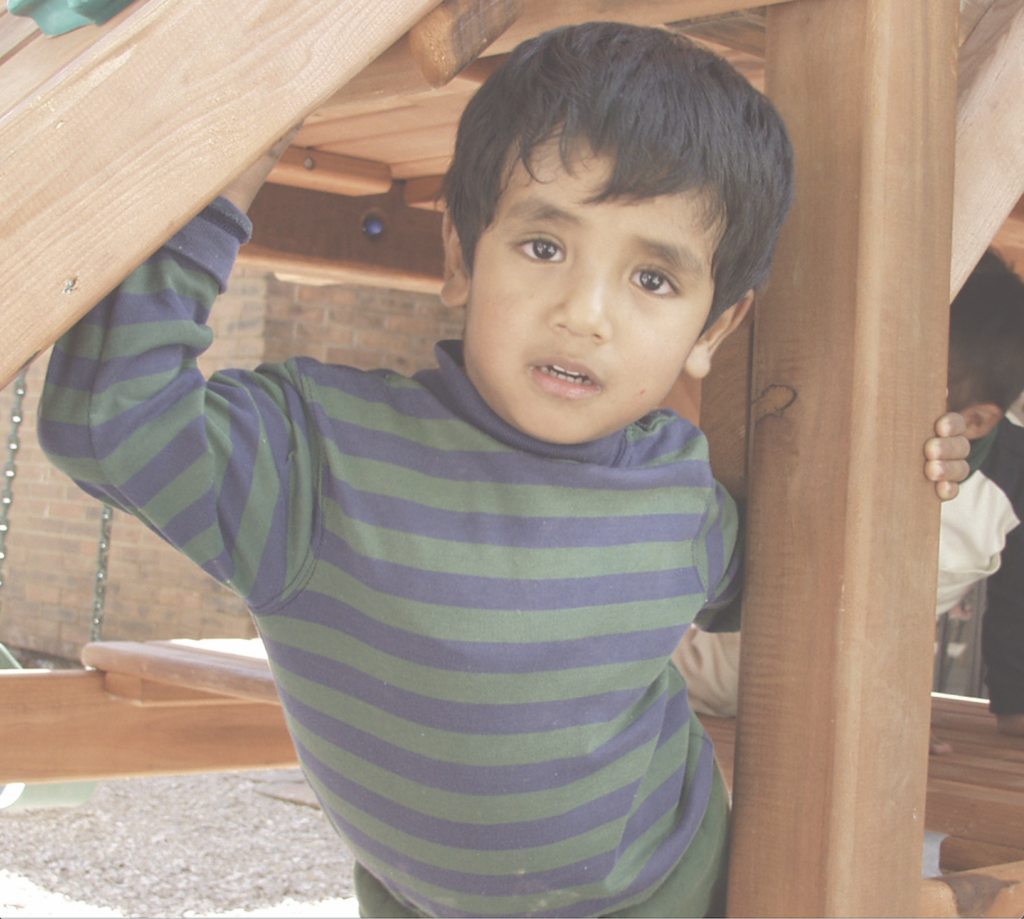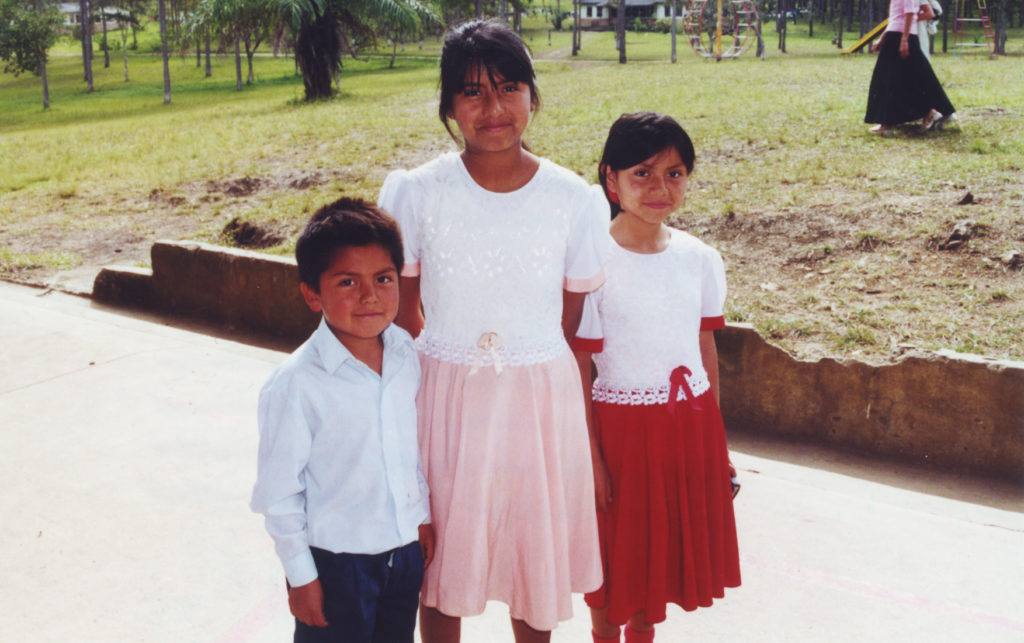Click the button to download a two-page flyer with Fast Facts about Guatemala.
Thank you for making a difference in the lives of children!

Population: 15,460,732
Official Language: Spanish
Capital City: Guatemala City
Guatemala City is the political, cultural, and commercial center of Guatemala. The city houses the country’s major banks, newspapers and government agencies. Guatemala is the most heavily populated country in Central America.

People
Originally settled by the Mayans, Guatemala’s current population is comprised primarily of two groups; the Ladinos and the Amerindians (Mayan descendants). Ladinos are of Hispanic-Amerindian decent and constitute 55 percent of the total population. Residing mostly in urban areas, the Ladinos are the more commercially and politically influential group. The Amerindians are the primary group populating the rural sections of Guatemala.
A small group known as the Black Caribs inhabit the lowlands along the Caribbean coast.
Culture and Life Styles
A large part of the population lives in the rural areas of Guatemala, especially the Indian population. Most of these families live on coffee plantations, or aldeas, in rented shacks, moving from place to place for seasonal work.
In Guatemala, almost every Indian community has its own style of clothing. Individuals often travel far from home in search of work or to trade in area markets, so a wide variety of clothing styles may be seen through out the country.
In cities and towns, the people enjoy such sports as basketball, cycling and soccer. In Indian communities, traditional colorful dances representing events from history or legends are often enjoyed.
In rural areas, religious holidays include processions, fireworks and Guatemala’s famous marimba music. The marimba is an instrument that looks somewhat like a xylophone. Indian musicians in the highlands often play the marimba alone, bringing out its hollow sound with two rubber-tipped sticks.
A lack of proper sanitation systems, decent housing and nutritious food result in a variety of life-threatening illnesses in Guatemala. Respiratory infections, parasitic infections and acute diarrhea are among the most common.
Often the streams and wells where poor Guatemalans get their water are contaminated with harmful bacteria. Sadly, many children die each year from diseases related to drinking this contaminated water.
Many Guatemalans are plagued with malnutrition because their diets are markedly deficient of the essential vitamins needed for healthy growth and resistance to disease.
Education
Children are required to attend school from the ages of 7 to 13. About 55 percent actually attend primary school, while only 15 percent go on to high-school. A shortage of state schools has led to an increase in private schools. Not enough to cover all the educational needs of the country. Additionally, many children living in rural areas either have no nearby schools or are kept at home to help with farm work.
About 80 percent of rural Indians cannot read and write, compared with about 30 percent of urban dwellers. About 54 percent of the total population of Guatemala is illiterate.

Housing
In rural areas of Guatemala, most impoverished families live in huts made from a combination of mud, adobe brick or wood. Often their homes are held together with vines which are laced around cane stalks and wooden poles. Most homes have dirt floors with one room to serve the sleeping, eating and living area.
In the urban areas, the families live in similar conditions; however, overcrowding is an additional problem.
For the most part, indoor plumbing and electricity are luxuries many Guatemalans cannot afford.
Economy
Guatemala’s economy depends heavily on farm products. In fact, two thirds of its total exports are based on agriculture. Coffee is the most important export crop, comprising about 30 percent of Guatemala’s total exports.
Corn is the crop grown for use within the country. It grows on about one-third of the farm land, and is the basic food of the Guatemalan people.
Manufacturing in Guatemala is growing, but has not kept up with the migration of people to the cities. As a result, the cities have a serious unemployment problem. Limited power sources and poor transportation hinder faster industrial growth. The principal industries are cement, sugar, flour, tobacco, medicines and vegetable oils.
Los Pinos Children’s Village
Los Pinos has 12 family homes with 10–12 children in each. It was established in 1978 for the children who were left orphaned by an earthquake that devastated Guatemala City.
How You Can Help
The mission of International Children’s Care is to bring hope and the gift of a new life to the orphaned and abandoned children of Guatemala. Through sponsorships, donations and volunteer service, you can give these children the chance in life that they so richly deserve.



2 Comments
Raquel · September 23, 2023 at 4:26 pm
what is the author of this article?
Ken Wilson · September 25, 2023 at 11:30 am
Raquel,
The author/writer would have been a staff member at this organization.
The basic information (as of the the time it was written) was collected from the CIA World Fact Book and the Encyclopedia Brittanica.
Comments are closed.